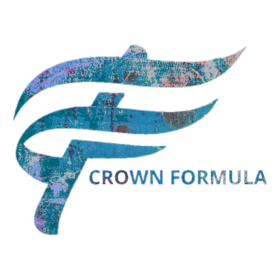Crown Formula: Difference between revisions
Neuleinster (talk | contribs) |
Neuleinster (talk | contribs) |
||
| Line 191: | Line 191: | ||
!68 | !68 | ||
|[[2017 Crown Formula World Championship|2017]] | |[[2017 Crown Formula World Championship|2017]] | ||
|[[2017 | |[[2017 Besmenian Grand Prix]] | ||
|[[2017 Porte-Lyon Grand Prix]] | |[[2017 Porte-Lyon Grand Prix]] | ||
|[[Bjoren Djurna]] ({{flag|Caspiaa}}) | |[[Bjoren Djurna]] ({{flag|Caspiaa}}) | ||
Latest revision as of 17:41, 12 July 2023
 Crown Formula logo used since 2012 | |
| Category | Open-wheel single-seater Formula auto racing |
|---|---|
| Country | Coalition of Crown Albatross |
| Drivers | 20 |
| Teams | 10-20 |
Crown Formula (also known as Formula 1 or CF1) is a class of single-seater auto racing and is the highest class of racing sanctioned by the International Motorsport Association. Crown Formula has been one of the premier forms of racing around the world since its inaugural season in 1950. A Formula season consists of a series of races, known as Grands Prix, which take place worldwide on both purpose-built circuits and closed public roads. Most events occur in rural locations on purpose-built tracks, such as the Virninac Grand Prix in Elbresia, but several events, most notably the Rio Palito Grand Prix, take place on city streets. A points system is used at Grands Prix to determine the annual World Championships, which are the seasons consisting of 20 total races.
Formula cars are the fastest regulated road-course racing cars in the world, owing to very high cornering speeds achieved through the generation of large amounts of aerodynamic downforce. The cars allow wide front and rear wings, and wide tyres, resulting in peak cornering forces near 6.5 lateral g and top speeds of around 350 km/h (215 mph). Crown Formula is one of the most expensive sports, as the average annual cost of running a team – designing, building, and maintaining cars, pay, transport – being approximately Q220,000,000 (or ℤ265,000,000)
